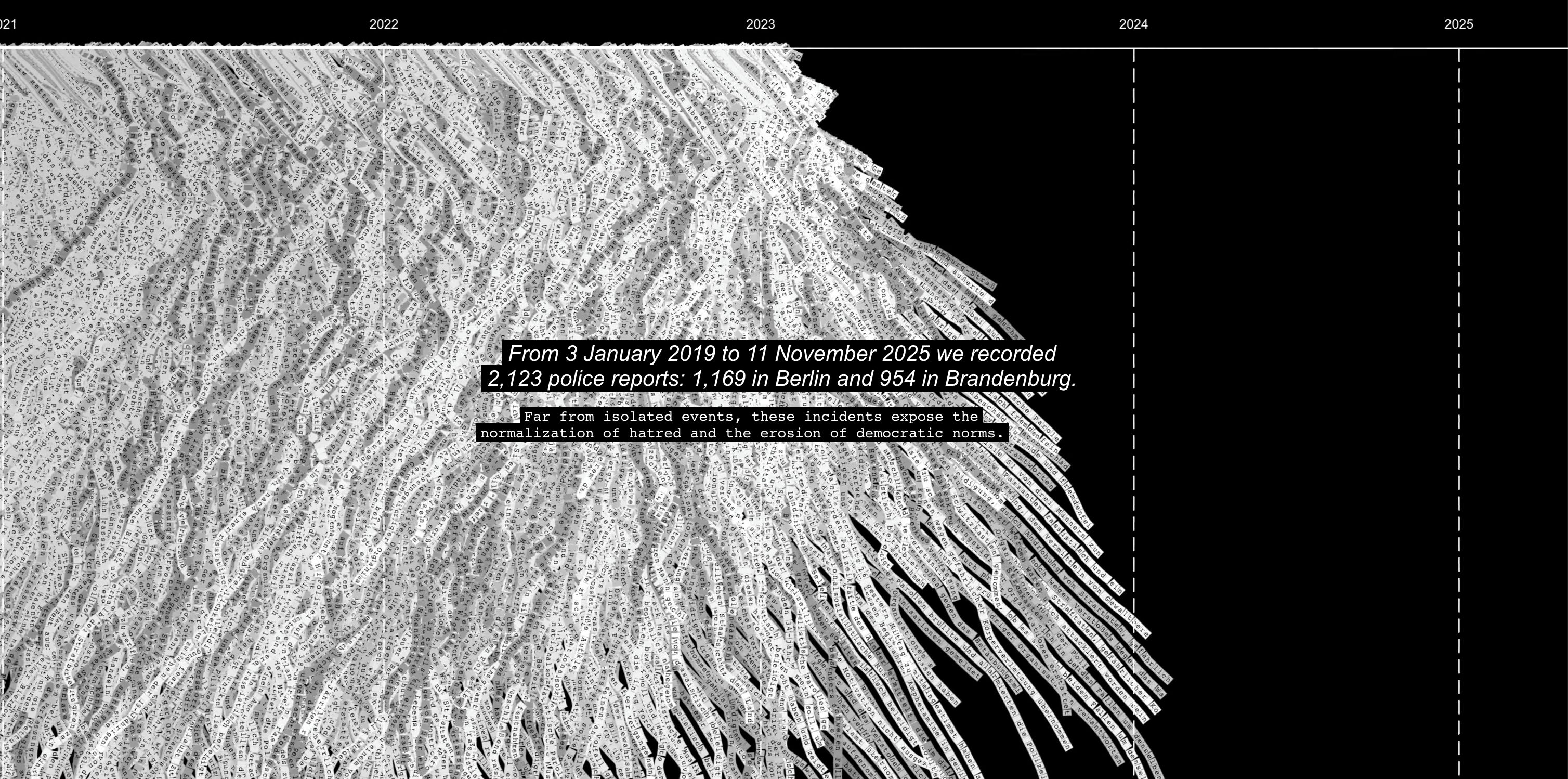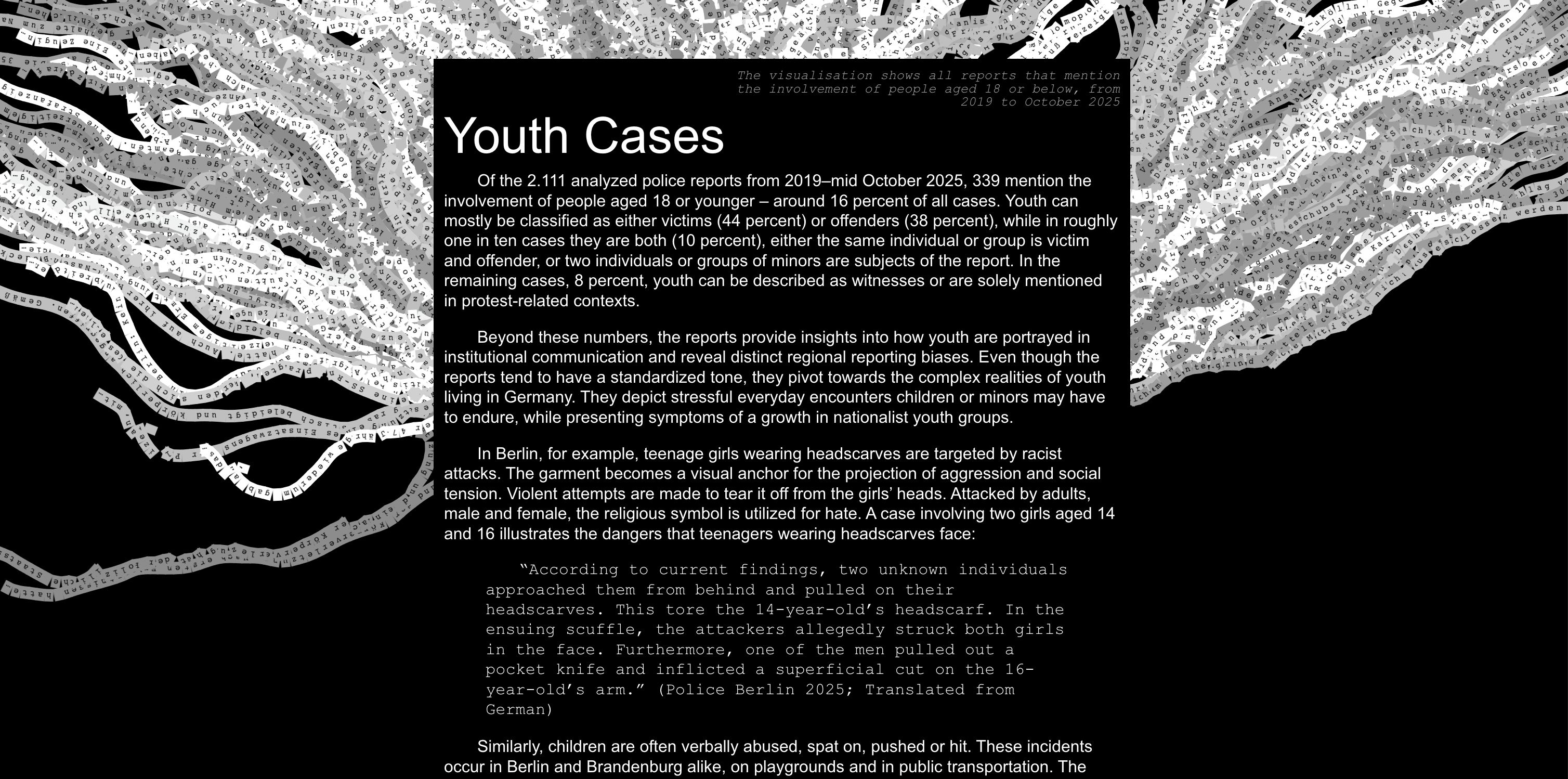Showcases
Recoding Right-Wing Extremism
Showcases transforms official police reports into multimedia installations that trace the normalization of right-wing violence in Berlin and Brandenburg, Germany. From everyday hate crimes to nationalist symbols on public walls, the project confronts what society often overlooks.- Time
- Location
- Berlin

Showcases is a data-driven investigation that visualizes police reports of politically motivated crimes to draw attention to a mounting normalization of xenophobic, trans- and homophobic violence and right-extremism in Germany. It roots in disturbing records of incidents such as: swastikas (Hakenkreuz) appearing on walls of mosques, synagogues and schools; people tearing off the Hidschāb from a 14-year-old and spitting in her hair; cashiers confronted with drunk customers that perform the Hitler salute. These are not isolated events, but daily occurrences that suggest an erosion of democratic norms and a resurgence of far-right ideology in society.
The project draws connection to the German political landscape, where with the growing support for the right-extremist party Alternative für Deutschland (AfD) since 2013, politically motivated crimes linked to far-right ideology have increased significantly (Bundeskriminalamt, 2025). This is taking place in a country whose history, marked by authoritarianism and violence, serves as a stark reminder of the intertwining of nationalist parties in the parliament and violence by like-minded extremists. And yet, in much of the public and political discourse, these tendencies seem to be neglected, while populists use their media coverage for pushing toxic narratives and anti-islamic, anti-woke, anti-semitic and anti-democratic agendas.
By compiling, visualizing and recontextualizing official police reports, Showcases brings to the surface, what is often hidden in plain sight. The project is structured around several interconnected aspects:
- a web archive, updated daily, documenting far-right criminal activity
- aesthetic investigations and artistic research practices that translate these records into multimedia installations and performative format
- public-facing formats that draw attention to the societal and democratic implications of these tendencies
- tools that enable individuals to share concerns with their local parliamentary representatives.
Together, these elements explore how visibility can foster a more nuanced understanding of right-wing violence in contemporary society and how it serves as a first step toward accountability.


